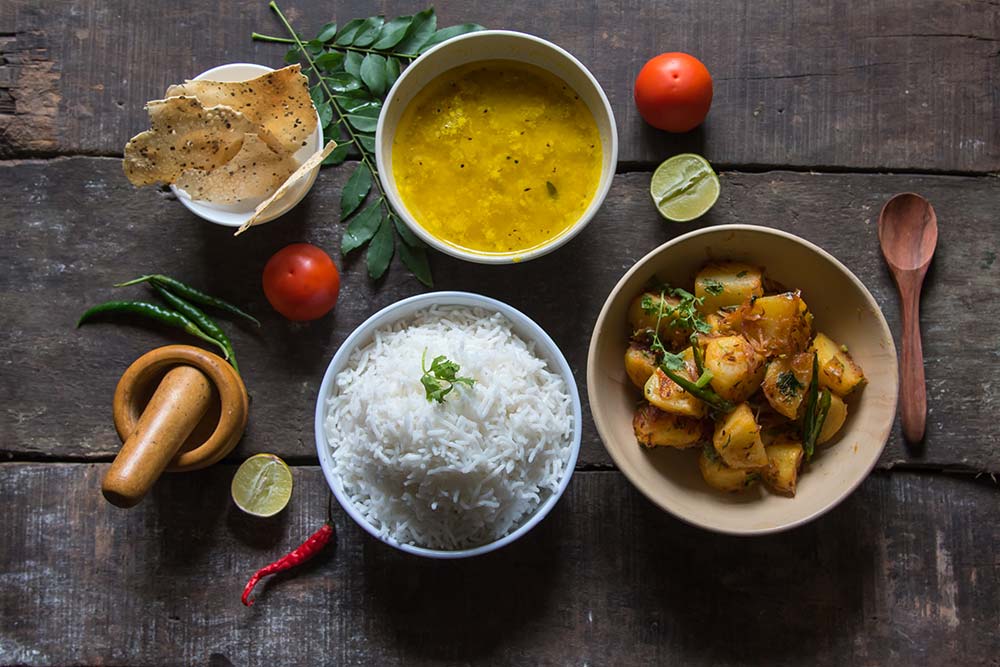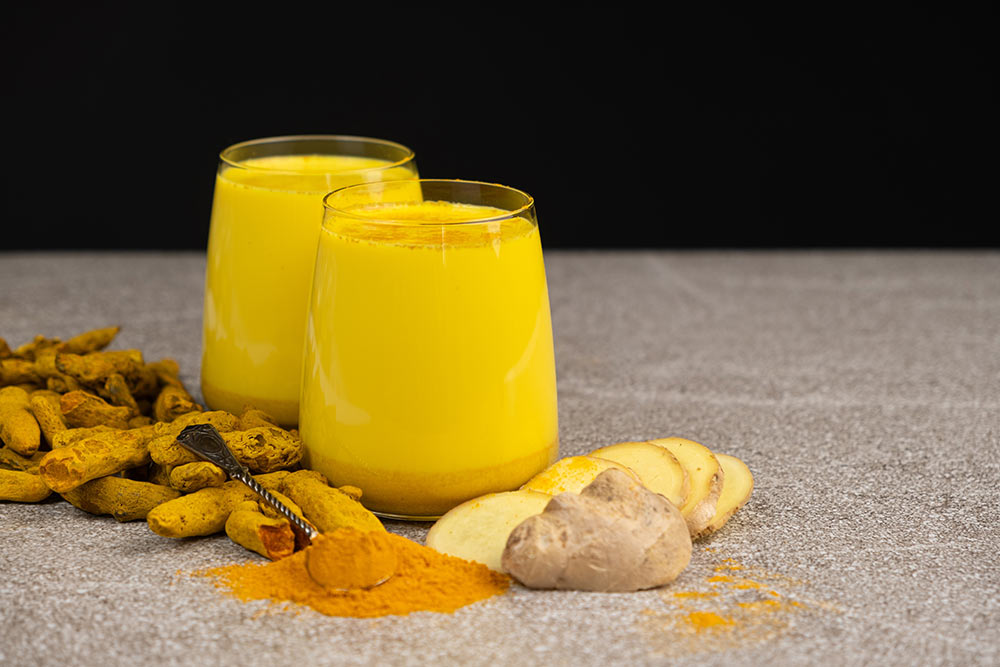
Understanding the Ayurvedic Diet: Eating for Your Dosha
By Vrinda Devani
Ayurveda categorizes individuals into three doshas—vata, pitta, and kapha—each with unique traits and dietary needs. By understanding your dosha, you can tailor your Ayurvedic diet to enhance digestion, energy, and overall well-being. Eating according to your constitution promotes balance and long-term health.
- Ayurvedic diet aligns with your dosha for optimal health.
- Vata types need warm, grounding foods to support digestion and energy.
- Pitta types benefit from cooling, hydrating foods to balance internal heat.
- Kapha types thrive on light, warming foods to prevent sluggishness.
- Observing digestion, energy levels, and emotions helps identify your dosha.
- Eating mindfully and seasonally enhances balance and vitality.
In Ayurveda, understanding your unique body type—or doshic balance—is the key to achieving balance in mind, body, and spirit.
The ancient wisdom of Ayurveda teaches that everyone is born with a unique constitution influenced by three primary doshas: vata, pitta, and kapha. Each dosha governs specific physical, mental, and emotional traits, shaping everything from digestion to energy levels. By identifying your doshic balance and following an Ayurvedic diet, you can optimize wellness, support digestion, and maintain overall harmony.
In this guide, we’ll explore the characteristics of each dosha, how to determine your dominant type, and the best Ayurvedic diet plan for your individual needs. Are you new to Ayurveda and looking to refine your Ayurvedic diet for beginners? Understanding your dosha can be a transformative step toward vibrant health.
Let’s dive into the world of Ayurveda and unlock the secrets to balance and vitality.
What Is an Ayurvedic Diet?
The Ayurvedic diet is a holistic approach to nutrition based on the principles of Ayurveda, an ancient system of wellness originating in India over 5,000 years ago.
Unlike conventional diets that focus solely on calorie intake or macronutrients, an Ayurveda diet considers an individual’s body type (dosha) and how different foods impact overall balance. This personalized approach may support digestion, boost energy, and promote mental clarity.
Each dosha—vata, pitta, and kapha—has unique dietary needs, and following the right Ayurvedic diet plan can help maintain equilibrium. Ayurveda emphasizes whole, natural foods, mindful eating, and seasonal adjustments to enhance well-being.
By aligning your diet with your dosha, many people find they can cultivate greater health and harmony.
Understanding the Three Doshas
Vata Dosha: The Energetic & Creative Type
Vata is associated with the elements of air and ether, making it light, dry, and cool in nature. People with a dominant vata dosha tend to be creative, energetic, and quick-thinking, but some individuals may struggle with irregular digestion, restlessness, and anxiety when imbalanced.
Balancing Vata with Diet:
- Favor warm, cooked foods with healthy fats, such as soups, stews, and root vegetables.
- Avoid cold, raw foods and excessive caffeine, which can aggravate vata.
- Incorporate nourishing herbs like ashwagandha for grounding.
Pitta Dosha: The Driven & Passionate Type
Pitta is governed by fire and water, making it hot, sharp, and intense. People with a pitta constitution are often focused, determined, and strong-willed, but an imbalance may lead to inflammation, irritability, and digestive issues in some individuals.
Balancing Pitta with Diet:
- Eat cooling and bitter foods like leafy greens, cucumbers, and coconut water.
- Reduce spicy, fried, and overly salty foods to prevent overheating.
- Herbs like fennel, coriander, and aloe vera help calm excess pitta.
Kapha Dosha: The Grounded & Nurturing Type
Kapha consists of earth and water, making it stable, heavy, and slow-moving. Kapha types are often compassionate, strong, and loyal, but imbalances can result in sluggish digestion, weight gain, and lethargy for some individuals.
Balancing Kapha with Diet:
- Opt for light, warming foods like spices, bitter greens, and legumes.
- Avoid dairy, processed sugars, and excessive oils that increase heaviness.
- Engage in regular movement and consume stimulating herbs like ginger and turmeric.
Your body knows when it’s time to slow down and reset.

How to Identify Your Dosha
Determining your dosha requires a look at your physical, mental, and emotional traits. While many people have one dominant dosha, others may have a dual-dosha constitution (e.g., vata-pitta, pitta-kapha).
Your dosha may be reflected in your digestion, energy levels, and emotional tendencies. Observing these patterns can help you determine your dominant constitution and tailor your diet appropriately.
- Digestion: Vata types may experience irregular appetite, bloating, and constipation. Pitta digestion is strong but prone to acidity. Kapha digestion is slow, with a tendency for heaviness and sluggish metabolism.
- Energy Levels: Vata types may have inconsistent bursts of energy but tire easily. Pitta individuals are driven and productive but may overheat. Kapha types have steady endurance but may struggle with motivation.
- Emotional Traits: Vata types may be creative but prone to anxiety. Pitta individuals are passionate but can be impatient. Kapha types are nurturing but may hold onto emotions.
By noticing these patterns, you can identify your dosha and tailor your lifestyle accordingly. Many people have a mix of two doshas, so look for dominant traits.
You can also consult an AyurPrana Ayurvedic practitioner for a personalized assessment.
Ayurvedic Diet Plan for Each Dosha
Ayurvedic Diet for Vata
To balance vata, focus on warm, grounding foods that provide moisture and nourishment.
- Best foods: Cooked grains (oats, rice), healthy fats (ghee, avocado), warming spices (cinnamon, nutmeg).
- Avoid: Raw vegetables, excessive caffeine, carbonated drinks.
Ayurvedic Diet for Pitta
Pitta types thrive on cooling, hydrating foods that keep internal heat in check.
- Best foods: Fresh fruits (melons, pears), leafy greens, dairy (in moderation).
- Avoid: Spicy dishes, fried foods, alcohol.
Ayurvedic Diet for Kapha
Kapha types benefit from light, dry foods that encourage movement and detoxification.
- Best foods: Bitter greens, legumes, spicy foods (ginger, black pepper).
- Avoid: Heavy dairy, excess sweeteners, fried foods.
Ayurvedic Diet Benefits for Overall Well-Being
Following an Ayurvedic diet based on your dosha may provide numerous benefits for some individuals. It may:
- Support healthy digestion and gut health
- Enhance mental clarity and emotional balance
- Help maintain optimal weight and metabolism
- Promote better sleep and sustained energy levels
- Encourage mindful eating and intuitive nourishment
Final Thoughts
Understanding your doshic balance may be a powerful tool for achieving balance in all areas of life. By tailoring your Ayurvedic diet to support your constitution, you can support digestion, maintain energy, and potentially cultivate long-term wellness. Whether you’re new to Ayurveda or looking to refine your practice, mindful eating and self-awareness are the foundations of a holistic, healthy lifestyle.
Ready to explore Ayurveda further? Take our Dosha quiz and start by making small, dosha-specific dietary changes and observe how your body responds. Over time, these shifts may lead to greater harmony, vitality, and well-being.
Learn more about Sohum Healing Resort and reveal your higher self through Panchakarma!
SHARE

Vrinda Devani
MD, CAP, RYT-200
Vrinda’s dedication to empowering women towards vibrant health and living shines through in her practice as a board-certified Obstetrician and Gynecologist, and as an Ayurvedic Practitioner.